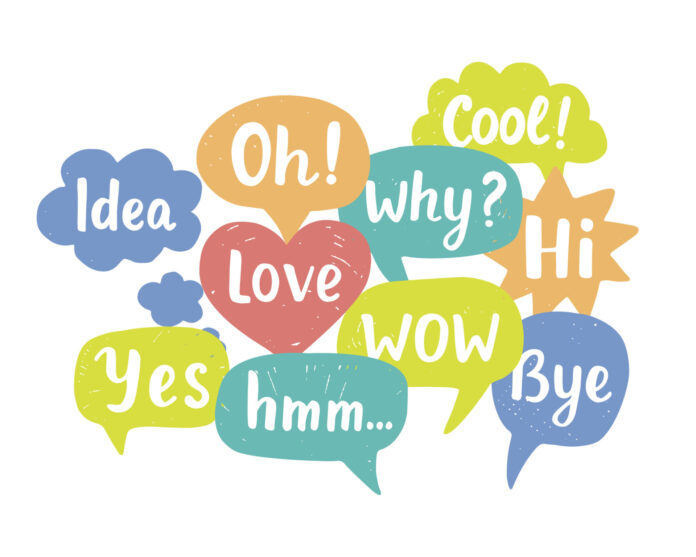
WholeFoods Magazine
Are You Part of the Buzz at Natural Products Expo West?

Want to be the brand everyone is buzzing about at the sprawling Natural Products Expo West, taking place March 7-11, 2023? The consensus of successful marketers is to start thinking and talking about your news long before the event begins.
If your brand is not being talked about before, during, and after the show, your job isn’t done. Being well branded, and having a meaningful message, a breakthrough product, and creative ideas, is great...but it isn’t good enough. You need to get noticed.
90% of the work that goes into a trade show should happen before you set foot on the show floor.
It’s a year-round effort. It’s not what you say about your brand that counts, it’s what others are saying combined with media exposure, that gets people talking. Media relations needs to be a focal point for trade show success.
Trade shows are a lot of work for journalists too. At a trade show, every attendee, exhibitor, and their marketing person is trying to garner the journalists' attention. It can be exhausting!
Before you approach a journalist, you need to make sure you have a story that stands out.
What can you do? We went straight to trade and consumer journalists in the field and asked them what gets their attention. We also asked retailers and brands what’s worked for them in the past.
Invite face time
Trade shows (especially SupplySide West), are like a reunion that people look forward to all year. That doesn’t mean you can’t break into the crowd, but you need to be prepared and have a good story. Trade shows are a great opportunity for media to reconnect with old friends and resources and meet new ones.
This is your big change to get face time with hard-to-reach journalists. They want what’s new!
Booth staffers who are eating, drinking, texting, reading or slumping are not inviting or engaging. Friendly faces do the trick.
Deliver what’s new
Getting a journalist in the booth doesn’t get a story. You need to give them news in a format they can use.
World-weary journalists have seen everything, but still get excited when they see something that is genuinely, breaking news. Newsworthiness can be hard to quantify. Sometimes it's a gut feeling you get, but often the criteria is based on whether something feels fresh and new, if it's innovative, if there is credible support such as research or experts, if it feels authentic, creative, useful, on trend, and whether there is passion behind it.
An interactive experience can trigger interest and inspire thought. Have an activity available to immerse people in the booth, for attendees to participate in and watch others. It’s not hard to get a journalist to engage when you give them a sensorial experience.
Find the story
There is a reason behind everything you do, and journalists want to hear about it. Your story not only draws people in, but it also saves them time.
Media-savvy companies get coverage because they tell good stories. Always be prepared with memorable facts and tips. Don’t expect a journalist to remember or even take notes at the media event. You must make their jobs easier by having good talking points. A press kit is easy for them to use and should always include a “what’s new page” for a quick snapshot.
You have to speak in their language by tailoring your message to the audience for the publication. New products. New studies. New trends. There is always something new to talk about.
Angle for attention
Every editor wants to get there first. Be armed with at least three different story ideas before you speak with a reporter. Find out what they are working on or interested in and adapt your idea to support their interests so that it’s always exclusive to each media outlet.
Don’t go to a media event without considering what journalists will be there. Know how your product philosophy and services would be viewed by the various types of media whether, it’s TV, magazines, or blogs.
Check to make sure your “story” or “news” is at least slightly different every time you speak with a journalist. Giving them old news that you told them before, bores journalists and maximizes skepticism and disinterest. There will always be similarities, but making sure you stay on point for their audience or story line is important.
Get—and stay—ready
Don’t limit your time frame to the week of the trade show. Most trade shows offer year-round marketing. Contact the show organizers to find out how you can get involved in publicity activities. Always take advantage of pre-show marketing opportunities with the trade show. Check if the show has a newsletter, media events listings, or press releases they send out periodically, and see if you can get your product included.
Schedule new product introductions, research briefings, or a corporate announcement in sync with the show and prepare news releases about your activities. Contact trade magazines and daily newspapers with news about what you have planned around the event. If you have a visually stimulating product or demonstration, consider contacting local TV stations.
We recommend you start to come up with a theme for the next year’s event right after you finish the current event.
Previous contact with journalists and the media can also spark interest long before the event. Through listening and engaging in an activity while providing more information, they learn something new, and then you have an advocate for life.
Offer tools of the trade
So often you get to a booth, and the exhibitor has no press release, no press kit, and they refer you to a marketing person who isn’t there. Have a press release with your news ready for the journalists. Bonus points if it includes links to a high-res image. It also helps for us to see an example. Then we can use our senses to craft a description.
Readers are looking for expert tips, treatments, products, ingredients and breakthroughs. Have this information at your booth and in your press kit.
Don’t forget to follow-up!
Half of the reason you attend trade shows is for leads and potential business. The same applies to future publicity. It’s important to call or email editors you met at the show. Ask whether they have any questions for you or how you can help with their post-show articles.
Send a press kit consisting of press releases, facts and statistics, and bios of key team members. Continue to keep them updated between trade shows about your products and send them a flow of story ideas to write about. Your goal is to become a resource for articles about the industry.








